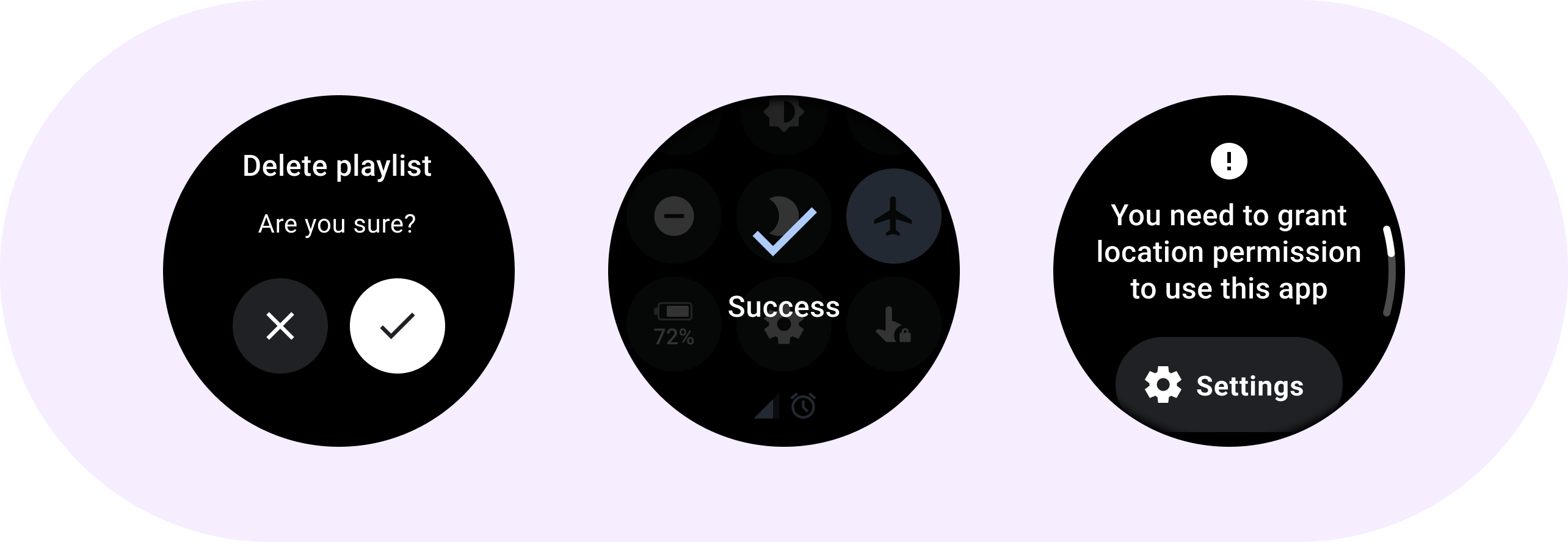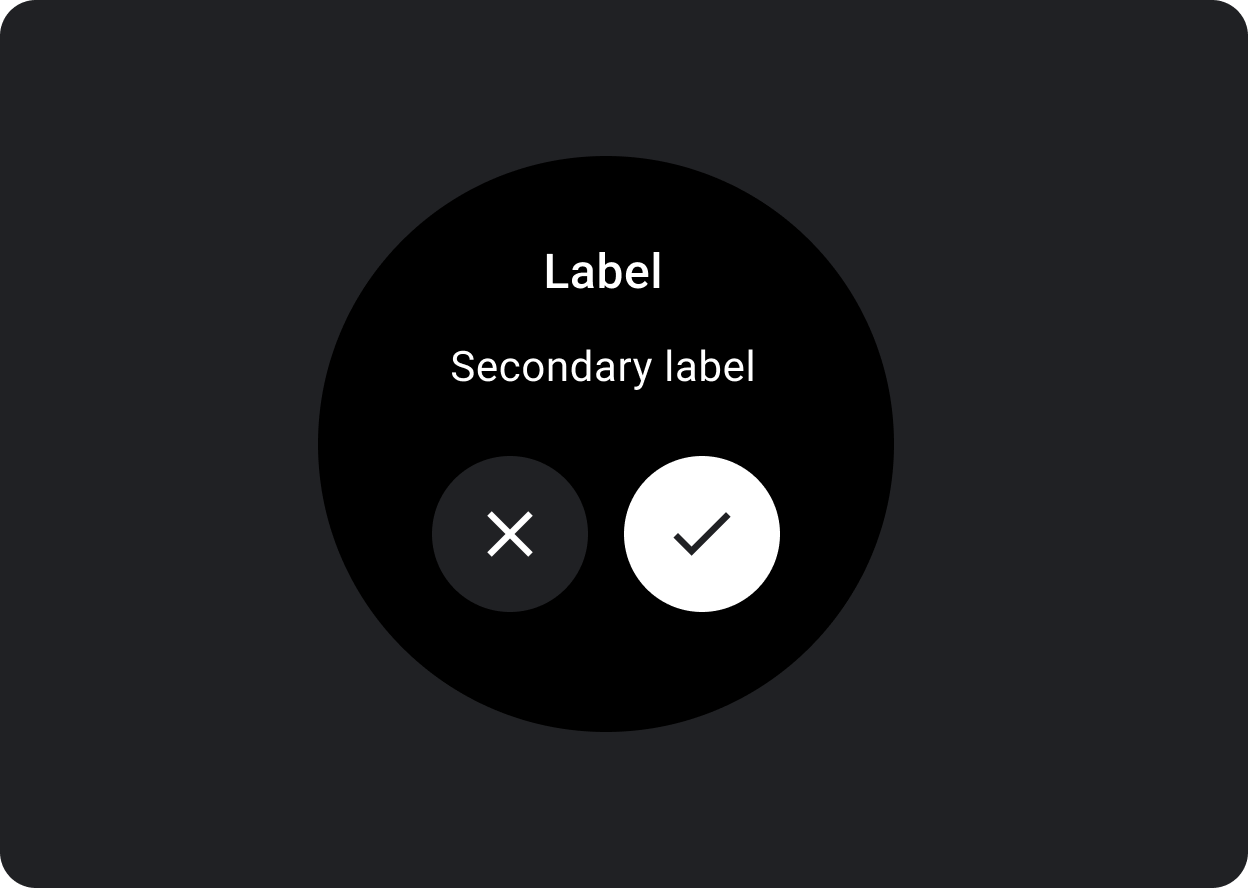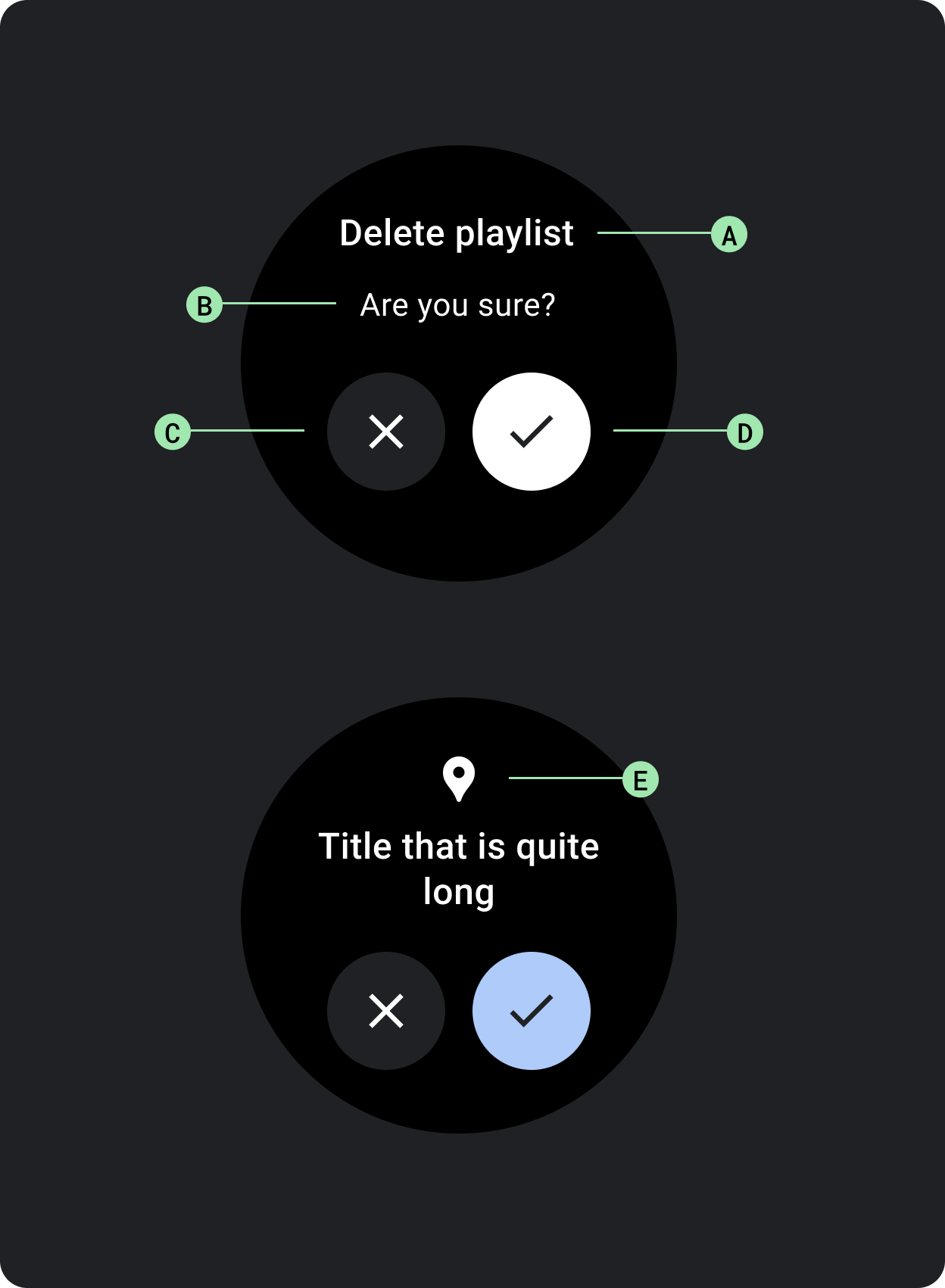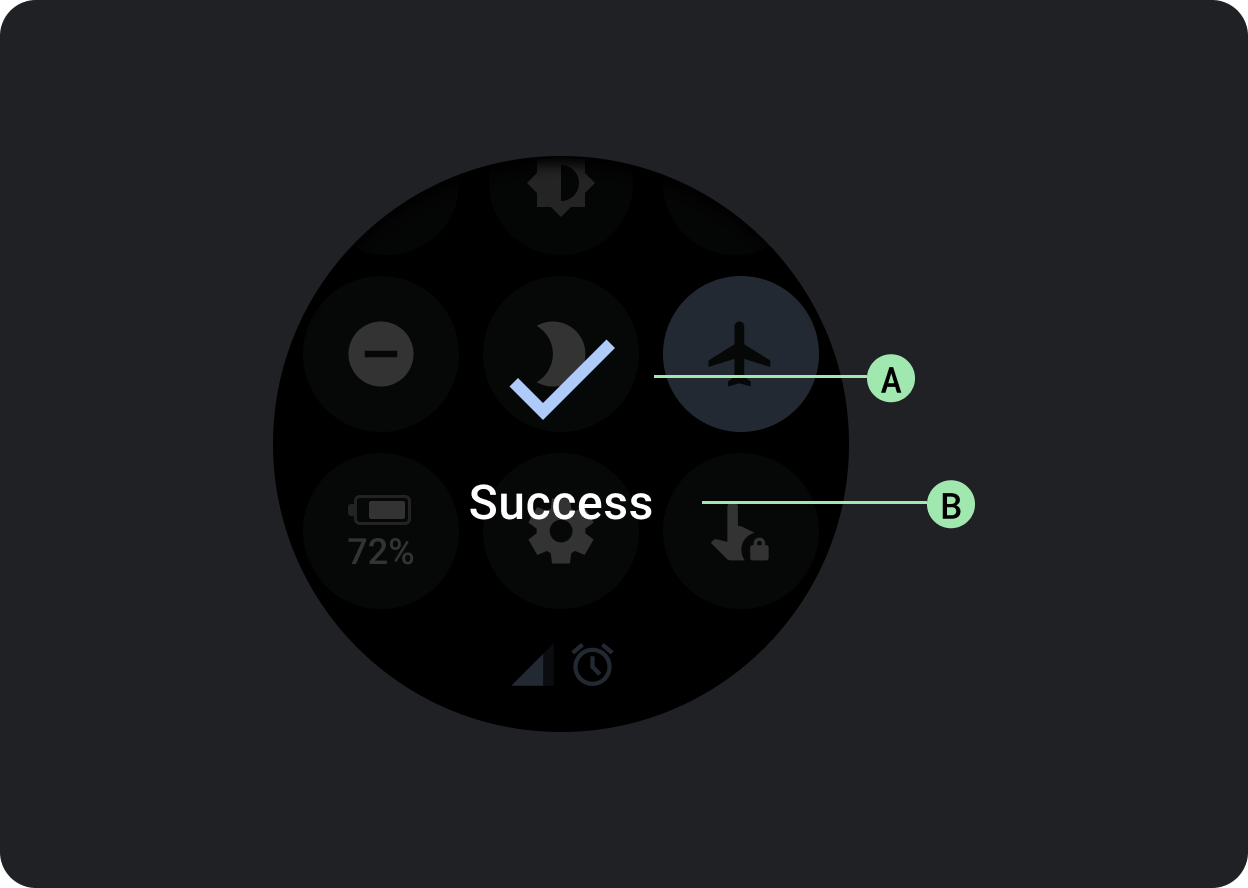Sử dụng Dialog để tập trung sự chú ý của người dùng vào một hành động kịp thời hoặc một phần thông tin.

Phân tích

Hộp thoại nên xuất hiện để phản hồi một nhiệm vụ của người dùng hoặc một thao tác, kèm theo thông tin liên quan hoặc dựa trên ngữ cảnh. Không giống như các đối tác trên thiết bị di động, Hộp thoại trong Wear OS chiếm toàn bộ màn hình và được phân lớp trên các nội dung khác.
Hộp thoại hỗ trợ cử chỉ vuốt để đóng. Khi người dùng thực hiện thao tác vuốt này, hệ thống sẽ hiển thị nội dung gốc ở chế độ nền.
Hộp thoại có một khe duy nhất cho nội dung hộp thoại được cho phép, chẳng hạn như Cảnh báo hoặc Xác nhận.

Sử dụng một thành phần thông báo để nhận phản hồi của người dùng về các nhiệm vụ quan trọng.
Cảnh báo sẽ tắt mọi chức năng của ứng dụng khi chúng xuất hiện và sẽ hiển thị trên màn hình cho đến khi bạn thực hiện hành động. Cảnh báo thường có chủ đích gây gián đoạn, vậy nên hãy hạn chế sử dụng cảnh báo.
Nếu nội dung của cảnh báo dài hơn ba dòng văn bản, hãy cân nhắc việc căn trái nội dung để cải thiện khả năng đọc. Nếu không, văn bản sẽ được căn giữa theo mặc định.
A. Tiêu đề
B. Nội dung (không bắt buộc)
C. Nút Không (không xác nhận)
D. Nút Có (xác nhận)
E. Biểu tượng (không bắt buộc)

Thành phần xác nhận sẽ hiển thị một thông báo xác nhận cho người dùng trong khoảng thời gian ngắn. Không giống như thành phần trong Material, thành phần xác nhận trong Wear OS không cho phép người dùng xác nhận về lựa chọn cuối cùng.
Hãy sử dụng thành phần này để thu hút sự chú ý của người dùng sau khi thực hiện một hành động.
A. Biểu tượng
B. Nhãn

